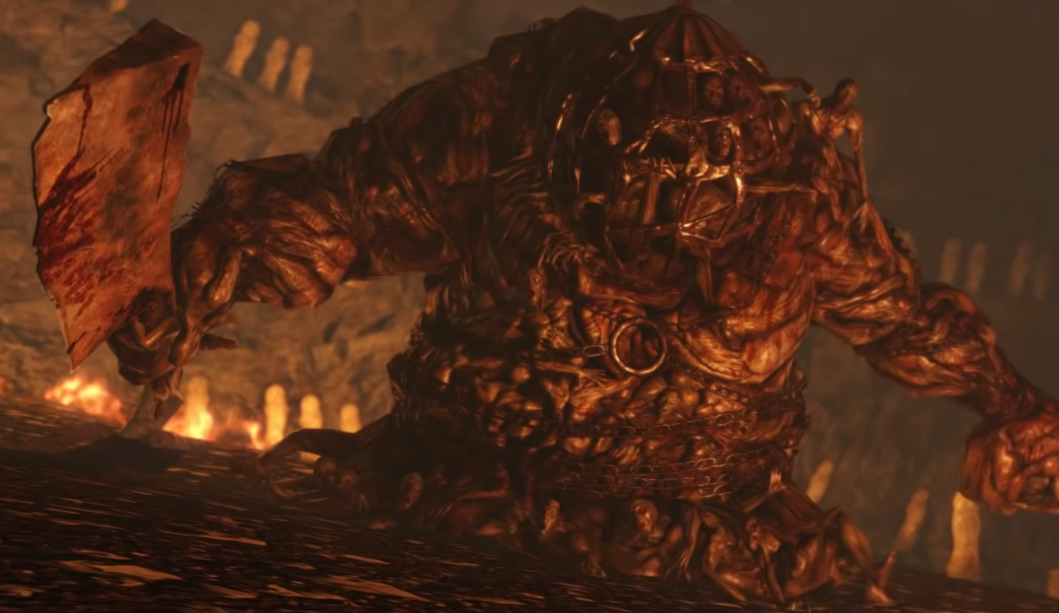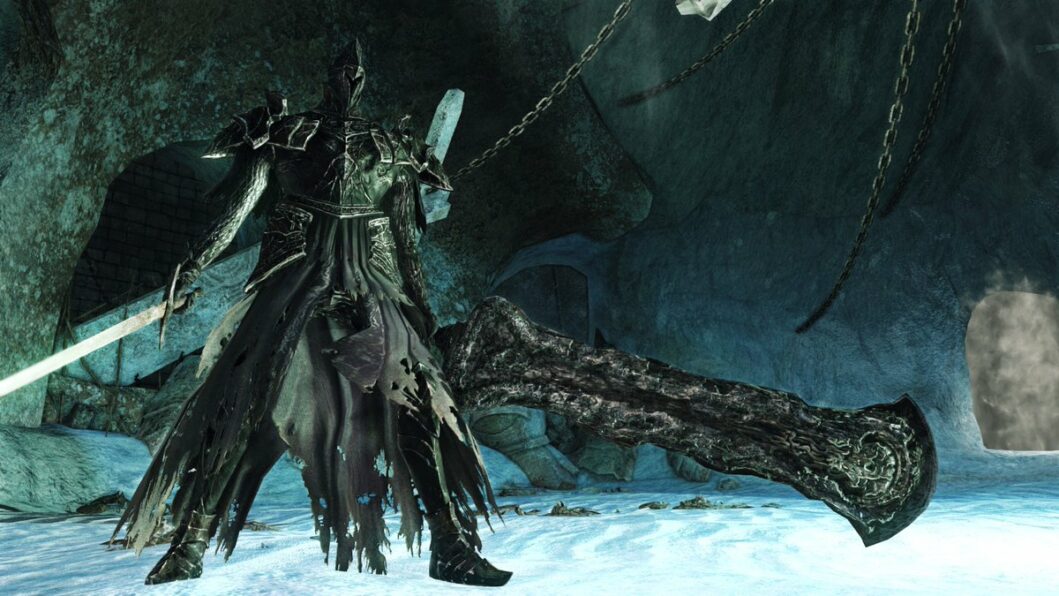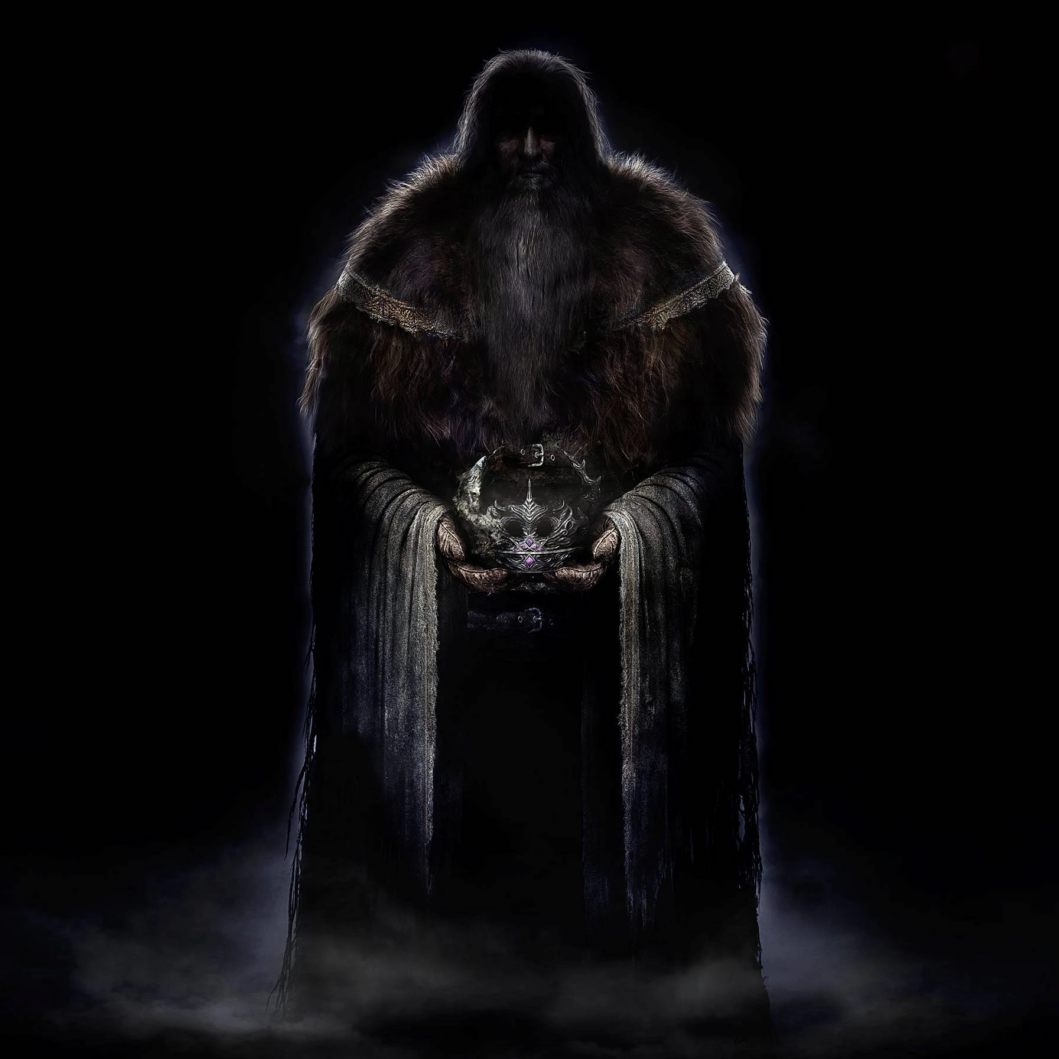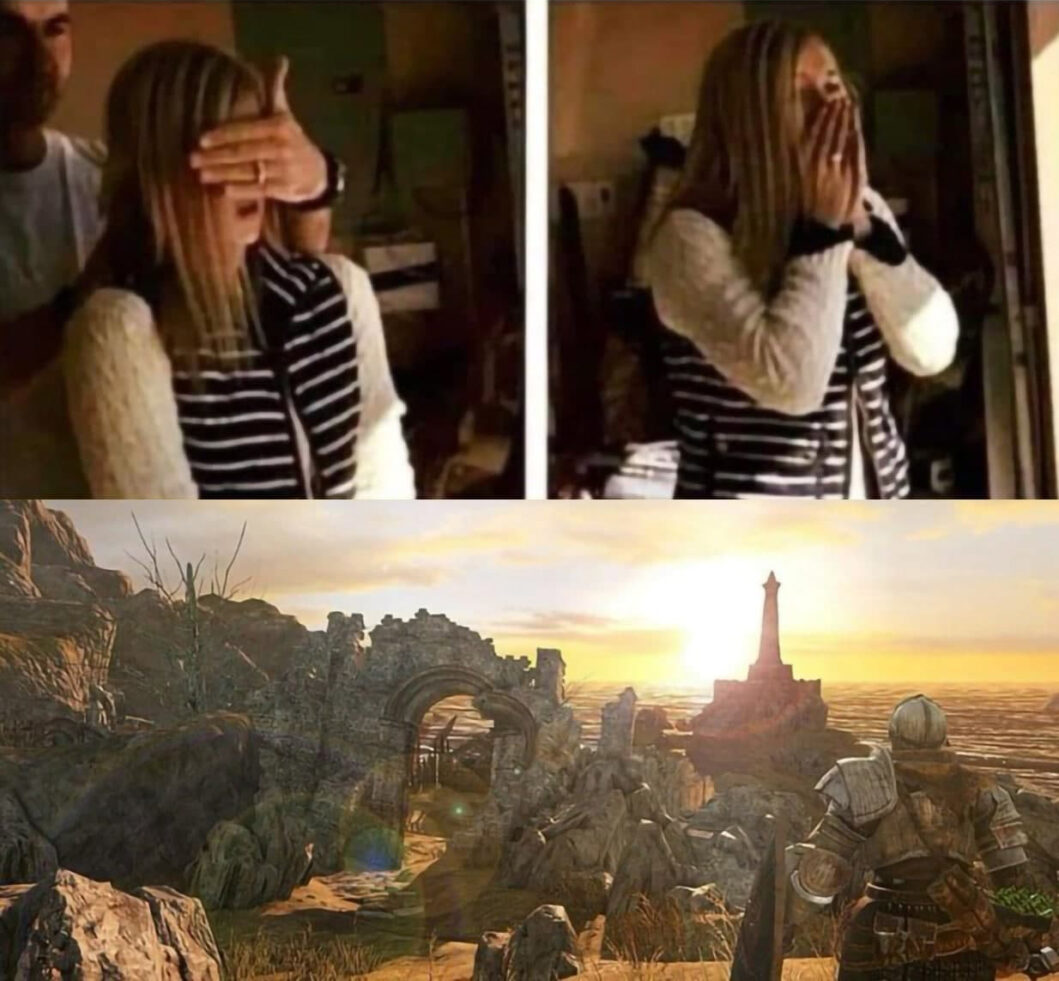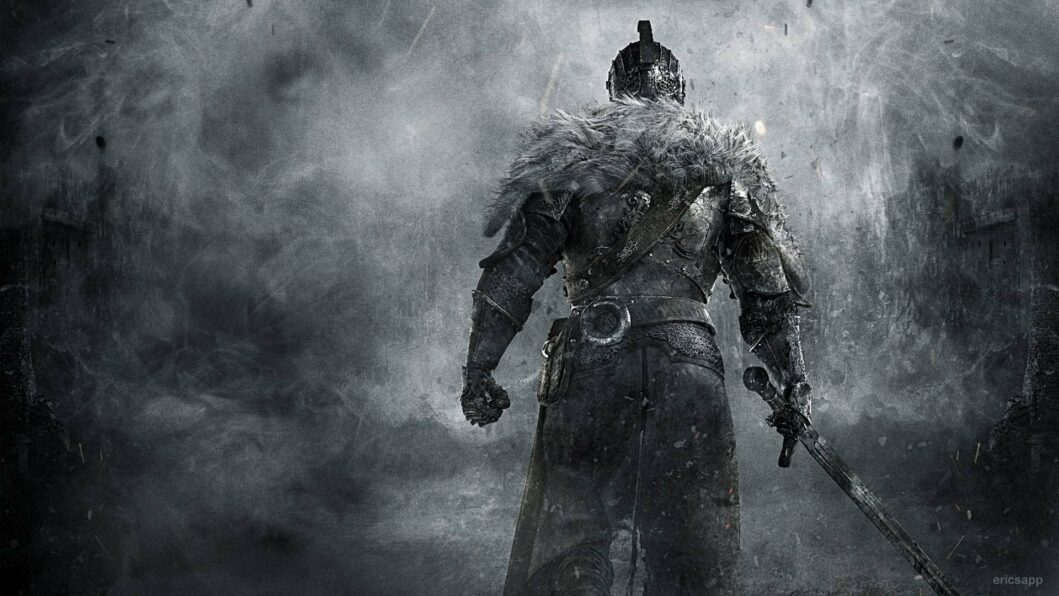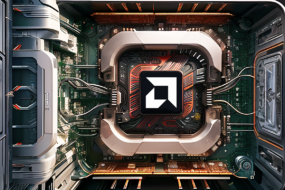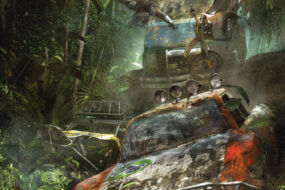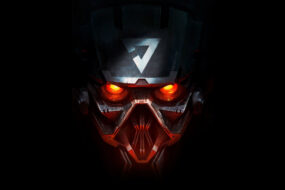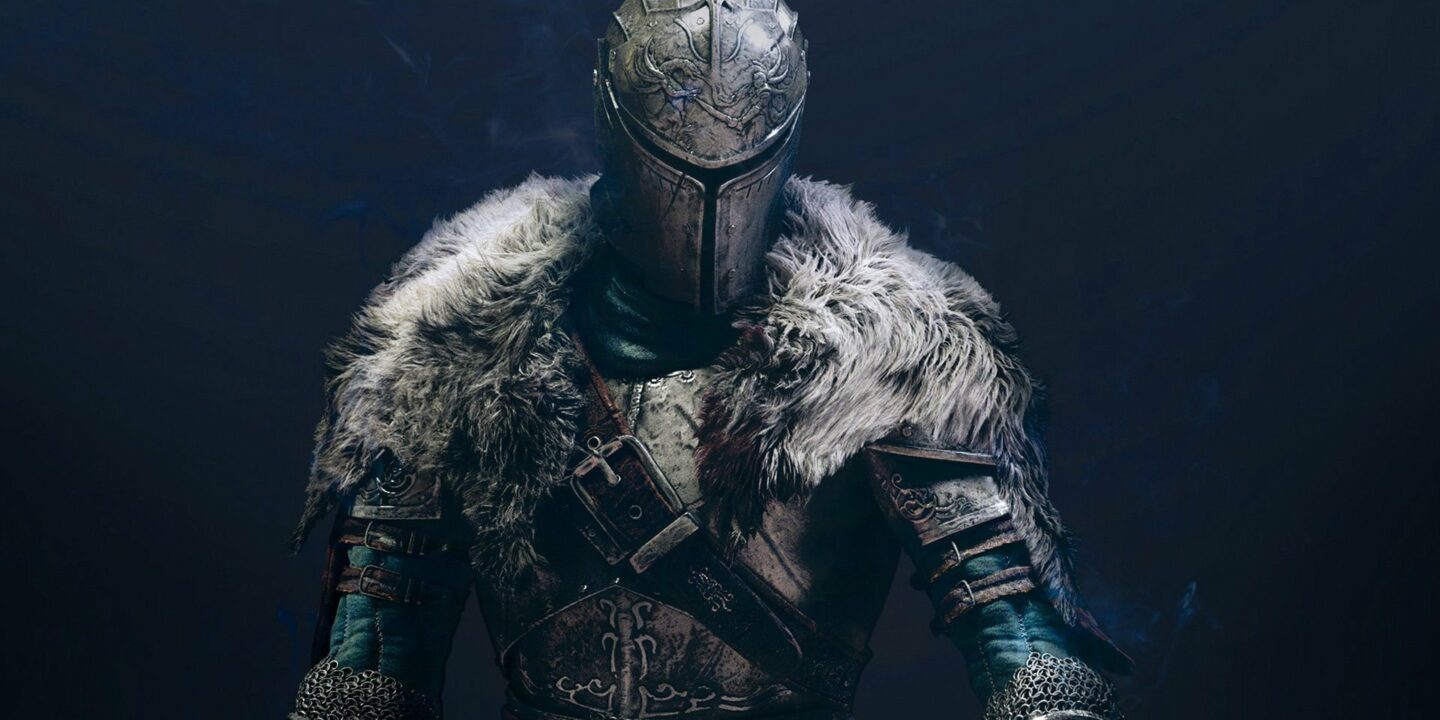
First of all, it is worth noting that all of the following is only the author’s personal opinion, and in no way claims to be the truth in the last instance. If you think otherwise, welcome to the comment section, where you and I can enter into a discussion on the topic of this material.
Introduction
Since the release of Dark Souls 2, the successor to Hidetaki Miyazaki’s cult game has been considered non-canonical, failed, passable and completely unnecessary. Moreover, another hater of the “”D2″” has his own “unique”, unquestionable and strongly justified opinion about why exactly the project does not deserved the right to life.
Fans of the original game dislike DS2 because of the unfamiliar, ill-conceived and sometimes even confusing level design, as well as firmly believe in the absolute uselessness of the sequel due to the lack of direct connection to the history of Gwyn, the descendants of the Lord of Ashes and their great kingdom.
Admirers of the third part of the franchise, in their turn, rant about boring, weak and simply monotonous bosses of DS2, and also necessarily mention poor graphics, obviously unnecessary system of weapon breakage, annoying mechanics of reducing the maximum amount of health after each death, implementation of the so-called “adaptability” parameter and controversial gems of life (stones that restore hit points).
Partly, almost all of the above-mentioned claims for Dark Souls 2 can indeed be considered quite objective. However, it is necessary to take into account the fact that in its essence, the sequel to Dark Souls belongs to the main series only indirectly, because in practice it is not quite so. It is much more logical to consider the second part as a kind of souls-like project (or spin-off, if you like), rather than a numbered part of the series. But can it be forgiven its sins and shortcomings because of that? Let’s talk about everything in order.
Dark Souls 2 is not a typical sequel
To begin with, Dark Souls 2 was developed by From Software’s second team, led by Tomohiro Shibuya and Yuya Tanimura. The main core of the Japanese studio under the direction of Hidetaka Miyazaki was working on the engine improvement and a brand new solus-like project Bloodborne. Thus, they were not able to fully participate in the development of Dark Souls sequel. However, it’s certainly worth mentioning that Miyazaki’s successors, the much-admired Shibuya and Tanimura, sought the maestro’s advice. But frankly speaking, consulting and directing development are completely different things.
I don’t think it’s necessary to explain why the change of game designer had such a strong impact on the development course and some mechanics of the project. After this information, we can safely say that DS2 is just a “variation on the theme” of Dark Souls, and the project in no way claims to be a full-fledged sequel, branded so cleverly on it by the publisher Bandai Namco.
By the way, Dark Souls 2 is by no means the only victim of clever copyright holders of popular franchises. There is no need to go far for examples: among the relatively recent games that failed due to failed marketing, we can mention Battlefield Hardline, which was developed by no less talented guys from Visceral Games instead of the usual Battlefield franchise of DICE studio. But, as in the case of DS2, the project was poorly financed, failed marketing and strictly tied to the main series.
Hardline is also commonly referred to as a failure, but in fact, just like Dark Souls 2, it is a somewhat different game with interesting mechanics, iconic setting and its own philosophy, which was never allowed to unfold. Fans mistakenly expected from Hardline the classic gameplay of the Battlefield franchise, and not getting what they wanted, they were quickly disappointed in the game and replaced mercy with anger, because of which the popularity of Hardline quickly came to naught and a very good game quickly disappeared into oblivion. You’ll agree, it reminds me of something.
But we have got distracted. Let’s return to the main topic of this material.
Is the numbered part out of series?
So what does that make it, DS2 is non-canon and not directly related to the main series of games? Judging by the storyline of the third part and Miyazaki’s overall concept, most likely yes – not really canonical. The game is more like a spin-off from the main series.
The sequel was made by completely different people with their own specific mindset and philosophy. Their fresh take on the franchise helped to change Miyazaki’s established concept a bit, so the series got some really necessary and important changes in the core mechanics, as well as gameplay improvements.
Dark Souls 2 as a inspiration source
Judge for yourself: gems of life are actually a direct analog of bood vial from Bloodborne, to realize a slightly faster gameplay. Of course, in BB they have to be grinded by killing certain monsters, which makes them a bit more difficult to obtain than the “trivial” souls farming to buy gems. However, they are still essentially as “infinite” as gems. In addition, these consumables can significantly speed up gameplay in favor of abandoning the classic mechanics of estus.
Further, if you dig a little deeper, for example, the ability to travel between bonfires (or their analogs from other games), available from the very beginning of the game, was used by Miyazaki in all subsequent projects of From Software studio, and multifaceted and elaborate DS2 combat with a variety of stances, unique attacks and weapon combinations found its second life first partially in Dark Souls 3, and then in the current Elden Ring.
If we turn our attention to the PVP component of the second Dark Souls, then even the most ardent haters of the sequel admit that battles with other hollow is performed at an extremely high level and in some places surpasses both the first part and the third.
There are minuses to everything
The bosses in Dark Souls 2 really aren’t as varied as you’d actually want them to be. Knights, big knights, knights with shields, and somewhat more elaborate knights. In fact, that’s how you can describe the vast majority of bosses in the sequel.
With the exception of the Fume Knight and partly Velstadt, the king’s protector, the other iron-clad bosses don’t pose a serious threat even to a newcomer, let alone a veteran of the series who has been through Demon’s Souls and the first Dark Souls. And it’s really not impressive at all. With 41 available bosses in the game, there are no more than 10 truly unique ones, and that’s a stretch.
And, in addition to the poor development of some enemies, there are also soulless copies of bosses from the original game, like the Ancient Dragon Slayer and Gorgoyles from the towers, or even worse – self-copying like the Old Demon from the smelter and Two Dragon Riders (two, Carl!). After all, it works like this: if the player coped with one absolutely harmless boss without any problems, then two of the same “brave dudes with the same face” will definitely be able to put up a decent fight against a pumped-up hollows. Right?
But fortunately, only a small fraction of really dangerous and powerful opponents suffer from such disadvantages.
Well, where can you go without unique bosses?
The Rotten is a huge mass of fused rotting (who would doubt it) undead, controlled by one of the hollow ones on his shoulder. It is one of the first powerful bosses to block the player’s path to their goal. In addition to its rather powerful attacks, the battle with the The Rotten is also complicated by the fact that the area around the center of the cave is engulfed in fire. In addition, the boss spews liquid from its mouth (if you can describe what it has in the center of its torso), and if you use fire weapons, coal tar, or pyromancy, it will literally fry you, causing serious damage.
Among the peculiarities of the fight with the The Rotten is the ability to significantly change the course of the fight by cutting off the upper (in fact, the only) limbs. However, the boss has the ability to regrow the severed body parts.
Fun fact: There’s a theory among fans that The Rotten is a reincarnation of Gravelord Nito, the boss from the original Dark Souls.
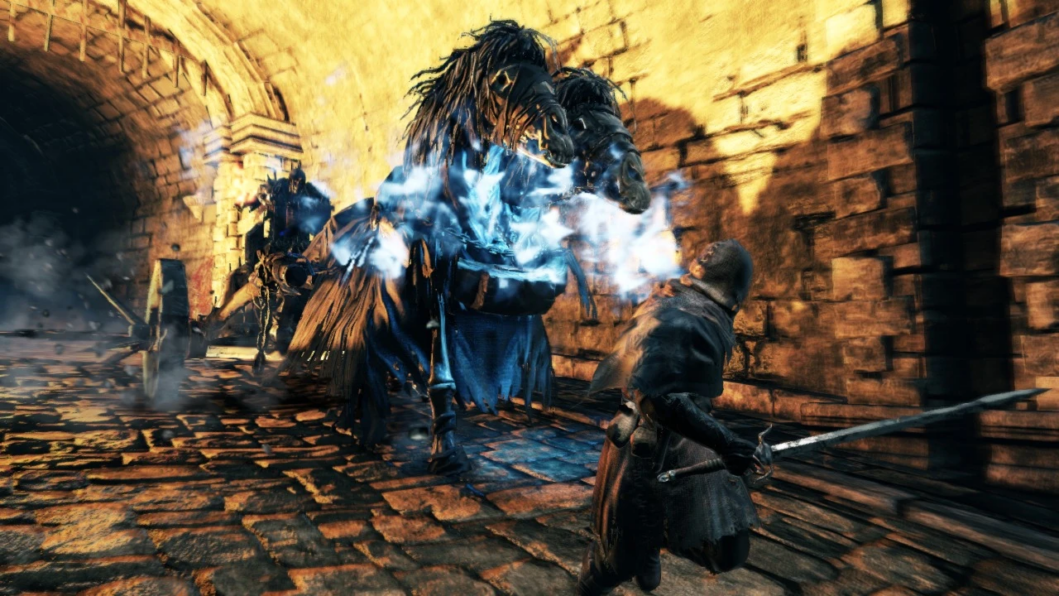
The Executioner’s Chariot (hello Elden Ring) is a small chariot propelled by a two-headed hollow horse and driven by an executioner. This is an optional and very simple boss, but fighting him is not like a trivial bossfight in the franchise.
The boss moves along a ring-shaped corridor and cuts everyone in his path with sharp blades located on the edges of the wheels. In addition, the player’s movement along the corridor is significantly slowed down by the usual monsters.
The player has several ways to destroy the Chariot, but according to the idea of the developers, to begin with it should be stopped: the player needs to run the whole circle, while hiding from the boss in the recesses of the corridor and pull the appropriate lever. Thus, the grid will be lowered and the enemy at full speed will crash into it. Next, the bossfight itself will take place with a two-headed horse, as the driver (executioner) will die from the collision with the grate.
On the first playthrough, Chariot doesn’t give much trouble, but given the specifics of the boss – it’s memorable.
Fume Knight (real name Raime) is a former defender of King Vendrick and part-time virtuoso swordsman. His pirouettes have caused many gamers to leave more than one hour of playtime in Raime’s chambers.
The boss has two phases, the first of which does not cause much trouble, because the player already has a lot of strong opponents like the Mirror Knight, but after 50-60% health bar, the Fume Knight enters the second phase. Here the player will have to face the real power of this boss. Instead of two blades, there is only one, a huge two-handed sword. Raime sets it on fire and can now use dark pyromancy. On top of that, from the second phase, the incoming damage on the boss is significantly reduced, and his mooveset becomes more aggressive.
There is one more interesting thing about the Fumes Knight: if you enter his chambers with the equipped helmet of Velstadt (former partner and second guardian of the king), the bossfight will start from the second phase. This is explained quite simply. Once upon a time, the two partners had a big fight, after which Welstadt challenged Raime to a duel, won, and, declaring his former partner a traitor, kicked him out of the kingdom.
And this is not all interesting opponents: Old Iron King, Demon of Song (easy – of course, but at the first meeting intriguing, and the way to it is more difficult than the boss-fight itself ten times), Mytha the Baneful Queen, Darklurker, The Duke’s Dear Freja and Nashandra. However, the last boss is relatively unique, but he poses almost no danger. And this is one of the final challenges of the game!
Nevertheless, in my personal opinion, the main draw of Dark Souls 2 is not the sophisticated and complex bosses at all, but the melancholy story and deep characters.
A story that tugs at the heartstrings
What could be sadder than a man deceived, in love? King Vendrick epitomizes the pernicious effects of blind love for his woman, a queen who ordered her husband to attack another continent and destroy a race of giants. This set off a chain of unstoppable events that in turn brought the once great kingdom of Drangleic to decline and ruin.
What about the protagonist? He is not a king, a subject, or a soldier. In fact, this is not his world, not his kingdom. He is simply looking for salvation – a cure for his ailment. In practice, however, it turns out that the fate of the decaying kingdom is directly related to his cure.
Walking through the game and talking to every NPC you meet, “sniffing” every corner, inspecting every sword and armor, reading their descriptions, the player slowly immerses into the very tragic history of the Dark Souls 2 world.
And at the end of his journey through the main storyline of the game, when the protagonist meets the same King Vendrick and sees what the once great warlord has turned into – the soul becomes empty. The lord locked himself in a small room to protect the throne from Nashandra, but he failed. All that remains is a faceless, desiccated dead man wandering aimlessly around the oval hall.
Majula
Majula, is a place that welcomes the player with its unforgettable scenery, simultaneously oppressive and calming music, and doomed locals, who will become an order of magnitude more numerous by the final game (if you contributed to it in any way).
Majula welcomes and escorts the player to a new world with much more survivable and dangerous enemies. Majula is like a Limbo that holds a piece of the lost grandeur of the Dark Souls 2 world.
In the dry residue
Summarizing all of the above, it seems to me that thanks to such a fortunate coincidence, it was the sequel to Dark Souls that allowed many casual gamers to make the first step towards hardcore games, and after the successful completion of the “DS2”, to go through the rest of From Software’s creations, as well as many souls-like projects.
Certainly, Dark Souls 2 has problems and flaws, but they all become insignificant when you immerse yourself in the history of the world and the tragic fates of its inhabitants.
If you found any inaccuracies in the description of skills, bosses, plot or lore, then write about it in the comments, and I’ll be sure to correct the text. Thank you for your attention and until new blogs!
